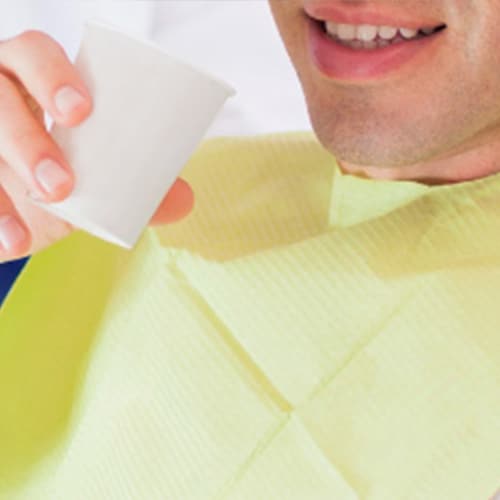Transmission of SARS-CoV-2, the pathogen that causes COVID-19, is largely airborne via infected aerosols, to a lesser extent by droplets, and to a much smaller extent by contact with fomites. For this reason, dental professionals have taken a number of evidence-based precautions to minimize the risk of transmission in the dental environment, such as triaging patients, limiting aerosol-generating procedures, changed in PPE used, following enhanced cleaning protocols, and allowing more time between treating individual patients. Many who had not already done so have also implemented pre-procedural rinsing as standard, but until now, there has been very limited research to support the efficacy of this practice in reducing COVID-19 transmission.
New research on pre-procedural rinsing and viral load
In a pilot study published in June 2021, researchers cited growing evidence that the oral cavity could act as a reservoir for SARS-CoV-2, with the virus found to be present in the saliva, gingival crevicular fluid, oral mucosal cells and salivary glands of infected persons. The research team sought to investigate to what extent pre-procedural rinsing could lower the viral load in the oral cavity, potentially reducing the risk of viral transmission.
The randomized, double-blind, single-center clinical trial investigated the use of mouth rinses with:
- A 0.075% cetylpyridinium chloride and 0.28% zinc lactate solution (CPC + Zn).
- A 1.5% hydrogen peroxide solution (HP).
- A 0.12% chlorhexidine gluconate solution (CHX).
- A 1.5% hydrogen peroxide solution followed immediately by a 0.12% chlorhexidine solution (HP + CHX).
Patients testing positive for COVID-19 were recruited and randomly assigned to one of the four groups, or a placebo group that used distilled water (the placebo). Saliva samples were taken from each patient before, immediately after, 30 minutes after, and 60 minutes after rinsing, and SARS-CoV-2 viral loads were measured.
Findings
The HP rinse and the CPC + Zn rinse produced the largest reductions in SARS-CoV-2 viral load immediately after rinsing, with a more than 15-fold and 20-fold reduction, respectively, compared to baseline. In both groups, a significant reduction was still present at 30 minutes post-rinse. At 60 minutes, the CPC + Zn mouth rinse had resulted in a modest reduction of 2.6-fold compared to the baseline viral load, while HP had returned almost to the baseline viral load.
In comparison, the CHX rinse produced a more than 2-fold reduction in viral load immediately after rinsing. However, unlike the CPC + Zn and HP rinses, the reduction increased after 30 minutes to 6.2-fold compared to baseline. At 60 minutes a 4.6-fold reduction was found for the CHX rinse compared to baseline, higher than the reductions for the CPC + Zn rinse at the same time point.
For sequential rinsing with the HP and CHX solutions, there was no significant difference in the viral load reduction compared to the CHX group immediately after rinsing. Given that HP alone had achieved a much larger reduction at this same point, it is thought that the subsequent use of CHX may have caused the HP being rinsed from the oral cavity before it could result in any measurable change. At 30 and 60 minutes, sequential rinsing resulted in lesser reductions than rinsing with CHX alone.
What does this mean for dentists?
So far, in the absence of evidence specific to SARS-CoV-2, we have used pre-procedural rinsing as a precautionary measure based on what we already know about these agents. For example, HP is an oxidative agent and known to disrupt the lipid-containing envelope of enveloped viruses (which includes coronaviruses, of which SARS-CoV-2 is one example). CHX mouth rinse is known to reduce the microbial load and has been shown in a previous study to reduce intra-oral viral loads.
This pilot study demonstrates the effect of these rinses in relation to SARS-CoV-2. It shows that, while the effect is transient, a significant, measurable reduction in viral load can in fact be achieved with pre-procedural rinsing. Of course, reduction is not the same as elimination. It is also important to acknowledge the limitations of the study, most notably the small sample size and the lack of data on baseline oral status. However, these initial results are supportive of pre-rinsing as a simple method to temporarily reduce the viral load, not to mention a positive foundation for future research.


Was this article helpful?
If you’d like a response, Contact Us.